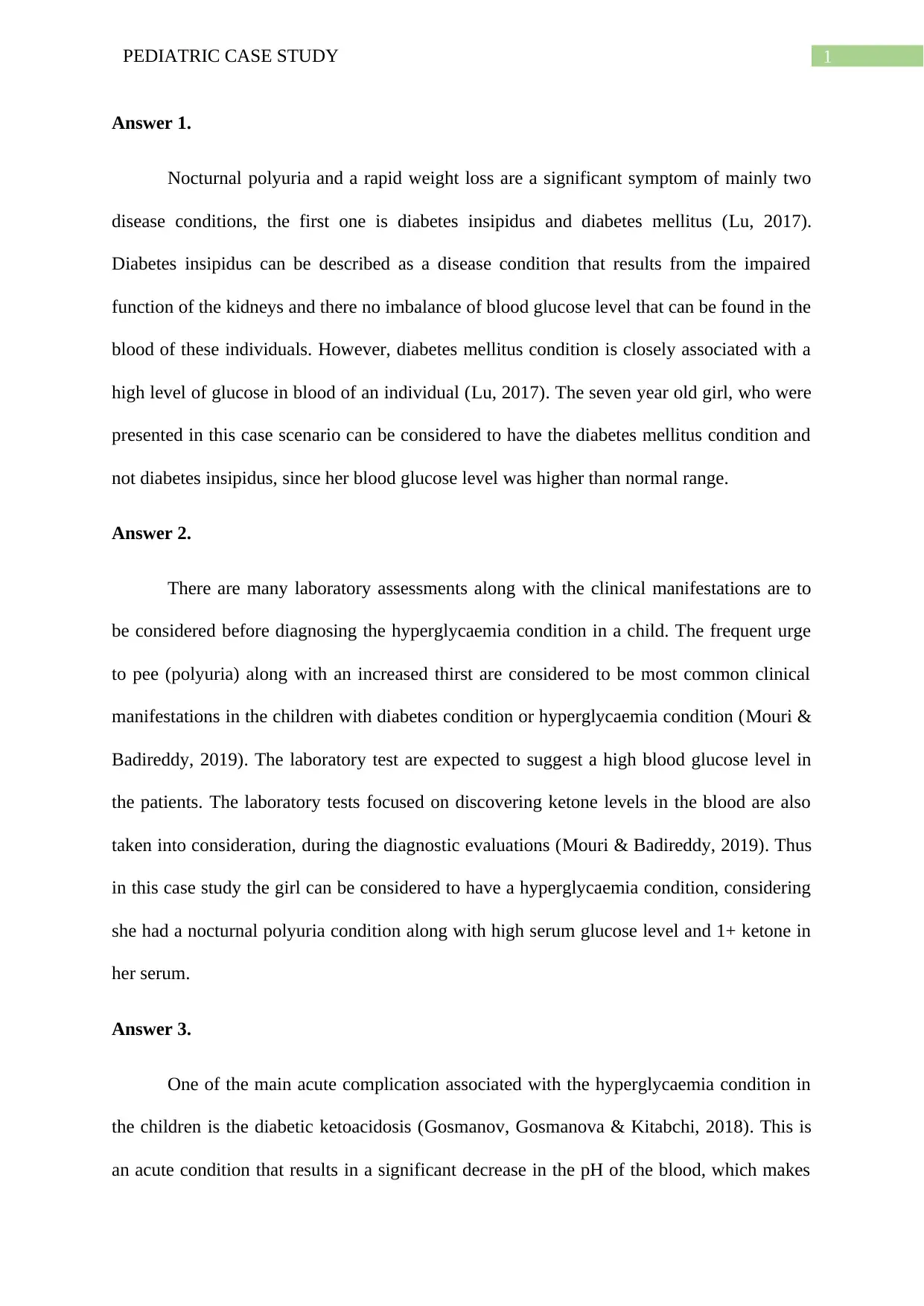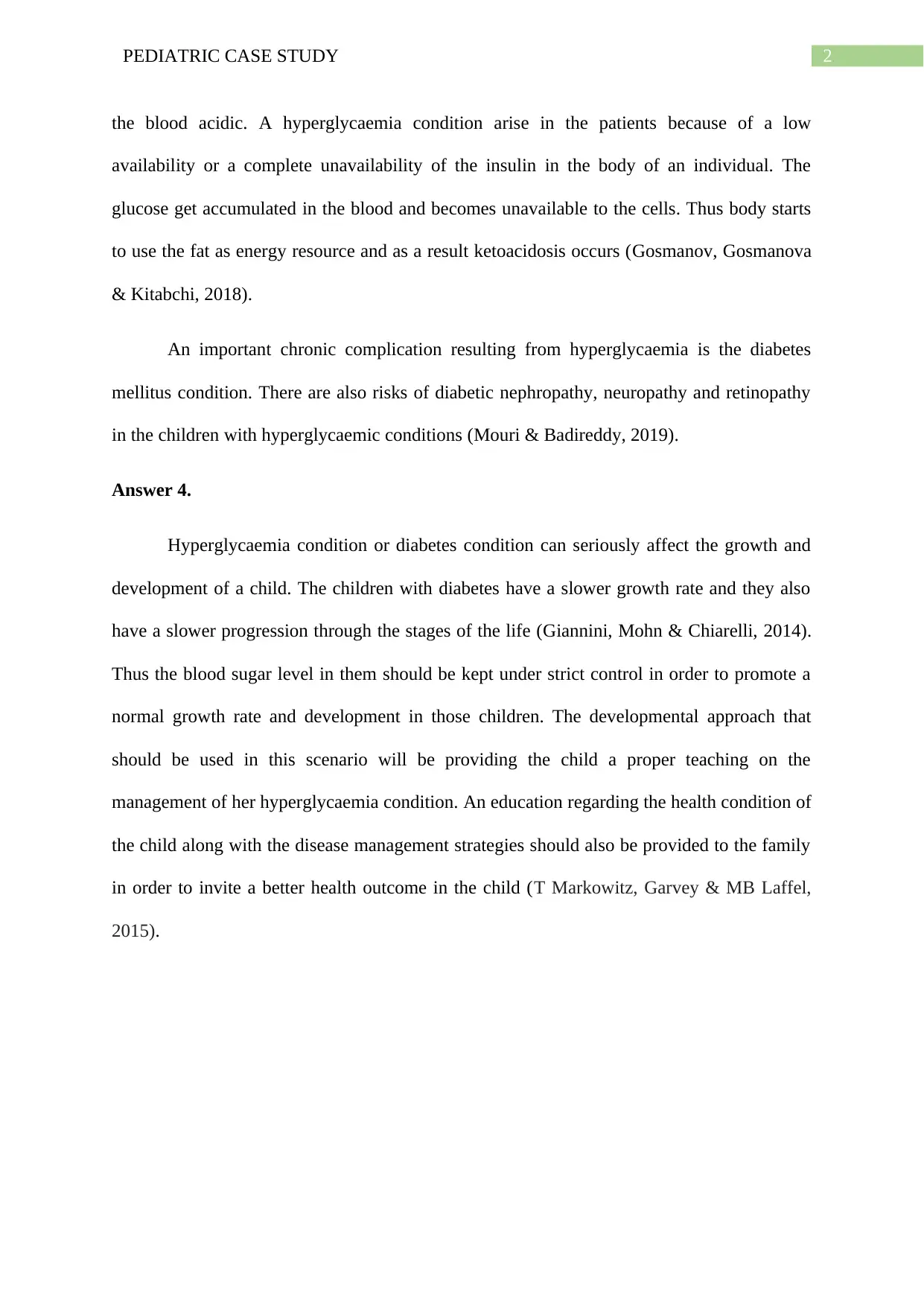University Pediatric Case Study: Diabetes Mellitus Analysis
VerifiedAdded on 2022/09/07
|4
|799
|35
Case Study
AI Summary
This case study presents a 7-year-old girl exhibiting symptoms of nocturnal polyuria and rapid weight loss, leading to an investigation of potential hyperglycemic conditions. The analysis differentiates between diabetes insipidus and diabetes mellitus, concluding the patient likely has the latter due to elevated blood glucose levels. The case study details diagnostic assessments, including the significance of polyuria, increased thirst, and laboratory tests revealing high glucose and ketone levels, indicating hyperglycemia. It further explores acute complications such as diabetic ketoacidosis and chronic complications like diabetic nephropathy, neuropathy, and retinopathy. The study emphasizes the impact of hyperglycemia on child development and recommends educational interventions for both the child and family to manage the condition effectively, promoting normal growth and development.
1 out of 4









![[object Object]](/_next/static/media/star-bottom.7253800d.svg)